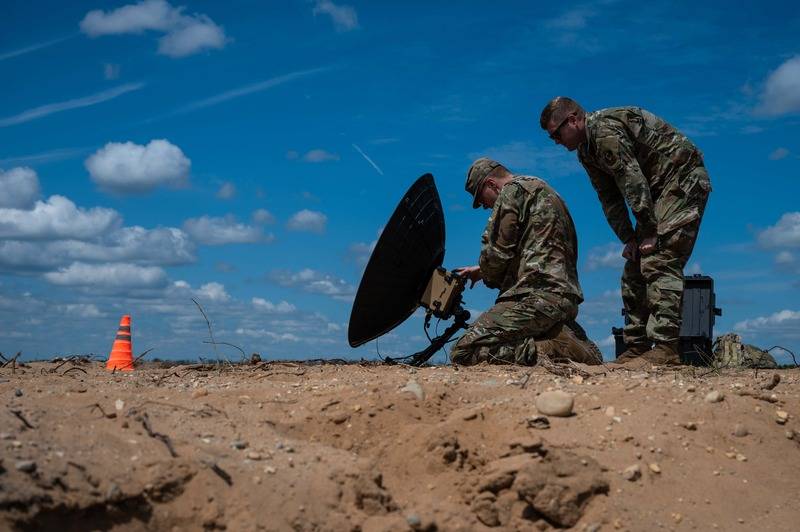The Pentagon is experimenting to use cutting-edge cloud networks and artificial intelligence systems to predict adversary’s moves even before they actually make them.
The US Northern Command (NORTHCOM) conducted a series of experiments, they called it the Global Information Dominance Experiments (GIDE). These tests combined global sensor networks, artificial intelligence systems, and cloud computing resources in an attempt to achieve information dominance and decision-making superiority. Reported by The Drive.
According to the NORTHCOM leadership, the machine learning tools and AI tested in the experiments could someday offer the Pentagon a robust ‘ability to see days in advance’. It means the system could predict the future with some reliability based on anomalies, evaluating patterns, and trends in massive data sets. They further said this capability is already available by tools readily available to the Pentagon.

What is GIDE and Why is it necessary?
“The recent Global Information Dominance Experiment three was cross command events seeking to leap forward our ability to maintain domain awareness, achieve information dominance and provide decision superiority in competition and crisis guide,” General Glen D Van Herk, the commander US Northern Command (NORTHCOM) and North American Aerospace Defense Command (NORAD), told reporters at Pentagon.
Follow us on Google News to get the latest defense news and analysis
It was the GIDE’s third test conducted in conjunction with all 11 US Combatant commands.
According to the Defense Secretary, integrated deterrence is about using the right mix of technology, operational concepts and capabilities all woven together in a networked way that is credible, flexible, and formidable. It will give any adversary pause, especially think about attacking our homeland.

General Van Herk further added, GIDE (or guide) also makes a concerted effort to create global integration, shifting the department away from today’s regionally focused plans strategies. The way we do force management force design paradigms and budgetary in acquisition processes. We are shifting our focus away from pure defeat mechanisms for homeland defense towards earlier deter and deny actions well outside of conflicts. Guide spurs faster decisions and provides proactive options by making new technologies more accessible and more effective.
According to Herk, the threat we face and the pace of change in the geostrategic environment continues to advance at really alarming rates. He said, we have entered an era of new and renewed strategic competition and this time we are facing peer competitors, both nuclear-armed that are competing against us on a daily basis. We must outpace our competitors by increasing our own efforts to transform our culture including factoring in homeland defense into every strategy, every plan, force management, force design decision as well as aspects of acquisition in the budget so that we can determine competition de-escalating crisis and if required, defeating conflict.
Subscribe to our newsletter!
How Does GUIDE Works?
General Herk told reporters that this AI-enabled decision-making could actually allow for a type of proactive forecasting that sounds truly like the stuff of science fiction.
“The machine learning and the artificial intelligence can detect changes (and) we can set parameters where it will trip an alert to give you the awareness to go take another sensor such as GEOINT on-satellite capability to take a closer look at what might be ongoing in a specific location. “

He said that the capability will make us proactive rather reactive. “What we have seen is the ability to get way further what I call left, left of being reactive to actually being proactive. And I am talking not minutes and hours, I am talking days.”
“The ability to see days in advance creates decision space. Decision space for me as an operational commander to potentially posture forces to create deterrence to provide that to the secretary or even the president. To use messaging, the information space to create deterrence options and messaging and if required to get further ahead and posture ourselves for defeat.”
General Herk said that GIDE 3, was a way of testing “a fundamental change in how we use information and data to increase decision space for leaders from the tactical level to the strategic level.” The Guide will allow more proactive and faster decision-making.
The third GIDE experiment used AI tools to perform real-time data analysis gathered by a network of sensors across the globe including the information available commercially from unmanned partners. That information could be shared with allies and other partners via cloud-based systems in real-time. The test also included support from the Joint Artificial Intelligence Center and Project Maven, a DoD project that leverages AI to shift through the massive amount of consistent surveillance imagery and rapidly identify useful information.
“We are not creating new capabilities to go get data and information. This information exists from today’s satellites, today’s radar, today’s undersea capabilities, today’s cyber, today’s intel capabilities. The data exists. What we are doing is making that data available… and shared into a cloud where machine learning and artificial intelligence look at it and they process it really quickly and provide it to decision-makers, which I call decision superiority.”
The GIDE gives us days of advanced threat warning and provides us with the ability to react proactively. Where, in the past, we may not have put eyes on with an analyst of a GEOINT satellite image. Now, we are doing that in minutes or near real-time. That’s the primary difference that I am talking about.
Analysis:
The Pentagon’s Global Information Dominance Experiments (GIDE or Guide) 3 gives a signal that future conflicts will surely be based on how we gather data using artificial intelligence and how fastly the gathered data will be analyzed.
The world’s three dominant military powers China, Russia, and the USA are already developing and deploying the tools to take on their adversaries. According to the Russian defense official, the planet is already in the midst of a third world war. But this time the battlefields are online.


